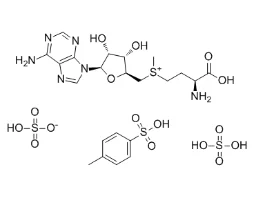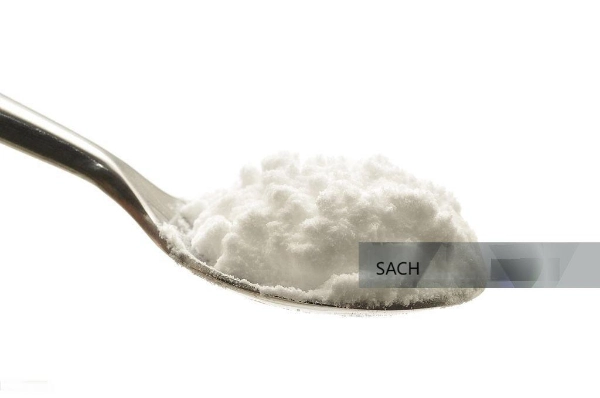- This topic is empty.
-
AuthorPosts
-
2024-11-13 at 6:17 pm #61375
In the intricate world of biochemistry, S-Adenosyl-L-Methionine Disulfate Tosylate (CAS No. 97540-22-2), often abbreviated as SAMe, emerges as a compound of significant interest due to its diverse biological activities and applications. In this blog post, SACH BIOTECH, a high-quality fine chemicals manufacturer, will share the features of S-Adenosyl-L-Methionine Disulfate Tosylate.
Physical and Chemical Properties:
SAMe Disulfate Tosylate is characterized by an exact mass of 766.091431 and a polar surface area (PSA) of 439.47000, which influences its solubility and interactions within biological systems. With a LogP value of 1.20310, it exhibits moderate lipophilicity, crucial for its bioavailability and membrane permeability. The compound is sensitive to air and light, necessitating storage conditions of -20°C in an inert atmosphere to preserve its stability.

Biological Activity and Applications:
Biologically, SAMe is renowned for its role as an orally active methyl group donor with potent antidepressant effects. It also exhibits anti-proliferative, pro-apoptotic, and anti-metastatic roles in cancer research. Notably, SAMe has been studied for its potential in treating chronic liver diseases, osteoarthritis, and showing promise in neurological research.
In terms of industrial applications, SAMe Disulfate Tosylate is a (2:1) salt of S-adenosylmethionine p-toluenesulfonic acid and sulfuric acid. Its use as a photographic developer, antioxidant, antibacterial agent, and corrosion inhibitor is well-documented. Furthermore, it serves as an intermediate in fur and hair dye production and is a component in the drug dichloroethane.
In Vivo Studies:
In vivo studies have demonstrated that the oral administration of SAMe can induce the activity of the CYP450 subtype CYP1A2 in rats, potentially inhibiting other CYP enzymes such as CYP2D6, CYP3A4, CYP2C19, and CYP2C9. This finding underscores the compound's potential in drug metabolism and interaction studies.
Safety and Hazards:
While SAMe is generally well tolerated, it has been classified under GHS hazard categories for skin corrosion and serious eye damage, emphasizing the need for careful handling and safety measures during its use.
Toxicity and Clinical Trials:
SAMe's toxicity profile is relatively mild, with gastrointestinal effects such as nausea being the most frequently reported adverse reactions. Clinical trials are underway to further explore its therapeutic potential in various conditions, including depression and liver diseases.

Conclusion:
S-Adenosyl-L-Methionine Disulfate Tosylate (CAS No. 97540-22-2) stands as a compound of multifaceted characteristics, offering a broad spectrum of applications in medicine and research. Its unique properties and biological activities position it as a key player in the advancement of treatments for various health conditions. As ongoing research continues to unravel its potential, SAMe remains at the forefront of bioactive compound research, promising new breakthroughs in healthcare and pharmaceutical development.
S-Adenosyl-l-Methionine Disulfate Tosylate Manufacturer – SACH BIOTECH
SACH is a company engaged in the synthesis of new drugs and the development of new chemical structures. It specializes in APIs, intermediates, fine chemicals and other related businesses. It has established a strong R&D team and its own production base. It is worthy of your trust!
Related Product :
1. Pro-xylane
-
AuthorPosts
- You must be logged in to reply to this topic.